Kolsch is a very popular beer style in the industry. It originated in Germany and is unique in its light or pale yellow color that’s almost transparent.
So, what sets it apart from just any light beer, blonde ale, and other commercial examples out there?
Kolsch beer is also very distinct in taste – widely described as highly carbonated and crisp or slightly dry. It smells and tastes more fruity than other beer styles, and it’s known for its accentuated hop flavor.
In terms of the brewing process…
This German beer differs from others because of its malt and yeast character.
Its fermentation process is like a hybrid of making ale and lager beer styles – there’ll be both top-fermenting and cold conditioning.
We’ll pop those bubbles up in detail later…
When you scroll through…
… we’ll be talking all about our Kolsch beer recipe, specifically:
- Exactly what type of malt, yeast, and other ingredients you’ll need for the perfect Kolsch-style beer;
- The easy steps you need to take to homebrew this unique beer style;
- The temperature and other specific conditions you need to pay attention to;
- Some optional steps and ingredients that might help prevent contaminants and give more flavor to your brew; and
- Lots more!
Homebrewing is a step up from just rummaging through the market for the best beer. And it’s even a bigger challenge to brew such a unique beer style as Kolsch.
But don’t worry because we got you!
Now, let’s fire up the furnace…
Kolsch Ingredients

Since Kolsch originated from a German city called Cologne (or Koln), you can expect to see a lot of German ingredients in this article.
From German hop to German pilsner – you’ll need it.
But…
The alternatives we’ll suggest are what make this a great recipe.
You can stick to the German ones if you want a good Kölsch experience. But it’s more important to pay attention to the fermentation and brewing specs.
So let’s keep scrolling down…
Water
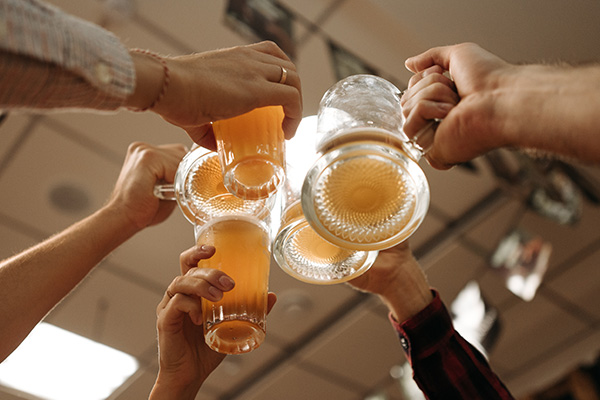
Of course, there’d be water. But it’s not just any water.
For best results…
Try to get as close to Cologne (or Koln) water as possible. It’s softer, which is ideal for limiting sparge water.
We understand that you can’t just buy Koln water online and get it shipped to your location.
But…
You may look up the water conditions in your area and see if you need to add some gypsum or calcium chloride.
Online calculators are available, so this shouldn’t be too hard.
Malt
If you don’t know this yet, brewing uses malt extract from more than one type of malt.
It’s usually a combination of two to three, with one having the higher percentage of the composition. That’s what we call the base malt.
Commonly, beer recipes use wheat malt as their base. As for the other component, some prefer Vienna malt.
But since you’re making Kolsch beer…
You’ll do well with high-quality pilsner malt (also known as pale malt.)
For every 8 lbs of German pilsner, you’ll add 1 lb of Carapils or light Munich malt (Vienna malt will also work well with pilsner.)
A little tip:
You can opt to use the malt itself. But that’s a lot more difficult because of the added steeping step to get the extract.
Plus, there’s no telling how much extra starch it will add to the mixture. That starch may cause off-flavors when you go to the store to develop in your brew.
So we suggest that you buy extract instead.
Also…
You’ll most likely find 100% pilsner malt extract. But rarely will you see 100% Munich.
So extract brewers prefer blends instead. You may find 50-50 Pilsner and Munich, Munich and wheat malt, etc. Be ready with your Math in this one if you can’t find exactly what you need anywhere.
But don’t worry – that’s what online grain recipe calculators are for.
Hops
There are a lot of German noble hops to choose from. But we highly recommend Spalt hops.
You may also choose among Hersbrucker, Tettnang, or Hallertau to pair with Spalt. A combination of two of these hops will yield the best results.
What’s so special about German noble hops?
This ingredient would add a little spice to the beer finish. Other beers brewed with the usual hops are either piney or citric.
On the other hand, Kolsch beer is a balance of both.
Yeast
Brewing beer Kolsch style requires a special kind of top-fermenting yeast called the White Labs WLP029 German ale Kölsch yeast.
It’s a German ale yeast developed and perfected over the years.
But that’s not all…
This particular ale yeast, combined with the lagering process, will bring out that ale and lager blend that’s unique about Kolsch.
Yeast starter (Optional)
Yeast is the key ingredient for fermentation. Some Kölsch brewers use yeast starters to aid the fermentation process.
Simply put…
Speeding up the fermentation process reduces contamination risks. But you need to be careful about it.
Make sure that your starter is free of any discoloration – even just a thin streak – or it would cause the whole lot to go bad.
Kettle finings (Optional)
Many breweries use kettle finings for the precipitation of haze that may contaminate the wort during boiling.
If you want to try this, we recommend either Irish moss or Whirlfroc.
Specifications
Now it’s time to get into detail about what exactly you’ll need to brew the best Kolsch style that you can at home.
Take note:
These are the specifics that make an authentic Kölsch. So, pay very close attention…
Have you ever heard of the BJCP or the Beer Judge Certification Program? They have a style committee that’s the authority for beer styles.
In other words…
The BJCP has a specific checklist that you need to meet before saying that you brewed your beer Kölsch style.
Its color range should be 3.5 to 5 SRM, or it should appear light gold with a clear, white head. And it should have an original gravity (OG) of 1.044 to 1.050 and final gravity (FG) of 1.007 to 1.011.
And most importantly, Kolsch-style beer has a 3.5 to 5% alcohol by volume (ABV) and 18 to 30 IBU (or international bittering unit.) The latter is the measure of its hop bitterness.
Don’t be scared.
Those figures are only intimidating at first. You’ll get the hang of it as you keep on practicing.
Now, let’s get to the good part…
Directions for Kolsch recipe
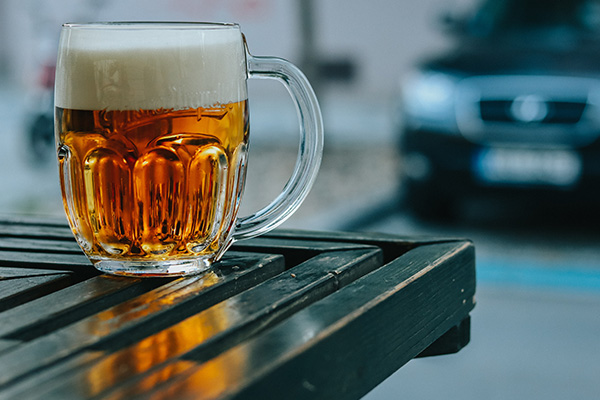
For this particular brew recipe, you’ll need:
- 14 L water
- 8 lbs Pilsner malt
- 1 lb Carapils or Munich
- 0.75 oz Spalt
- 1 oz Tettnang or Hallertau or Hersbrucker; and
- White Labs WLP029 German ale Kölsch yeast
So, first…
Infusion mash
Set the infusion mash at 147 degrees Fahrenheit or 64 degrees Celsius. Then add the malt extracts to 14 L water.
You might find other instructions using more. But a thinner mash – like 14 liters – can prevent too much sparging, which affects the overall quality of your brew.
Then…
Boil the mixture for 60 minutes and wait for the wort to appear.
However…
If you’re using malt grains instead of extracts, you’ll need to steep them first.
Get a Muslin or any grain bag for this process, put your grains in and tie the open end tightly. But leave some room to allow your grains to move inside loosely.
Then, submerge it in a pot of cool water first and slowly raise the temperature to medium heat. Wait for it to steep for 20 minutes.
Once done…
Fish out the bag and let it drain without squeezing it. Now, you have your extract!
First-Wort Hopping
Here’s another optional step in the process.
If you’re up to it…
…you can do first-wort hopping.
While the mixture is boiling, it will produce a bittersweet solution – that’s what we call wort. It’s the thing that later on becomes the beer.
Before that happens…
You may add a huge portion of the hops you’ll use for finishing before you transfer the wort to the fermentation chamber.
This will add complexity to the flavor, a smoother bitterness, and a stronger aroma.
Hops schedule
But most beer recipes and many breweries stick to a hop schedule. It’s a lot safer, especially if you’re a beginner in the homebrewing business.
And here it goes:
When the mash mixture starts to boil, set a timer for 15 minutes. Add the Tettnang (or the alternative) to the mash when you reach it.
If you choose to do the optional haze precipitation step, the best time to put the Irish moss or Whirlfroc is 30 minutes after putting in the Tettnang.
Whether or not you do that, make sure to add the Spalt 60 minutes after the mixture starts boiling.
After that…
Lower the temperature to 65 degrees Fahrenheit or 18 degrees Celsius. As the wort chills down, it’s time to add the yeast.
Fermentation
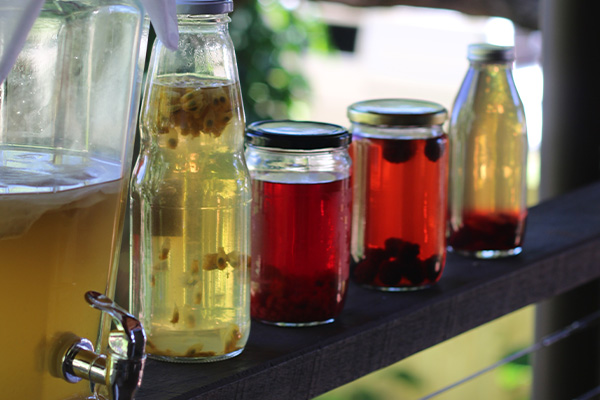
Before transferring the wort, make sure that the fermentation chamber is only at 60 degrees F or 15 degrees C.
When the chamber’s all set…
… you can pour in the wort to the chamber and let it ferment for five to seven days.
You need to be really careful in controlling the conditions of this step. Slight mistakes might cause your beer to produce fruity esters, sulfur, and other indicators of contamination.
Raise the temperature
You can adjust the fermentation temperature to 65 degrees F or 18 degrees C. This is what we call a diacetyl rest.
This step lasts after one whole day.
Age the beer
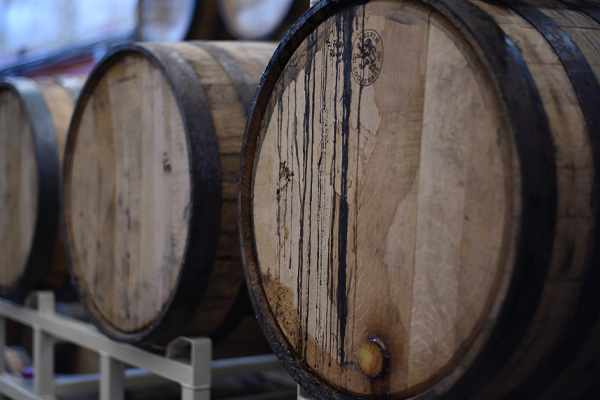
You’re almost done…
After the diacetyl rest, the wort has now become the beer. And you can now rack it to age for 21 to 30 days at 35 degrees F or 2 degrees C.
If you’re not familiar with it…
This is what we call a cold crash. It’s basically aging the beer at a drastically lowered temperature, and it’s commonly done in making lager.
When you’re done with cold conditioning, it’s time to store the beer in kegs or bottles.
Enjoy
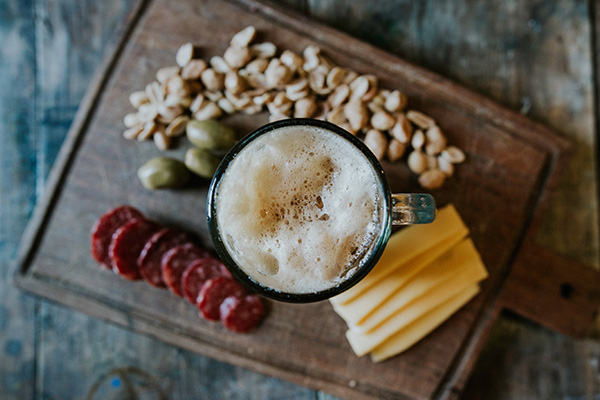
Voila!
You now have yourself a Kolsch beer just like the one from your favorite local brewery! It wasn’t that hard, was it?
As per the Kölsch Konvention and BJCP guidelines, Kolsch beers are served in stange glasses and with German sausages, grilled chicken, or any of your favorite greasy food.
Go ahead and enjoy!
Conclusion
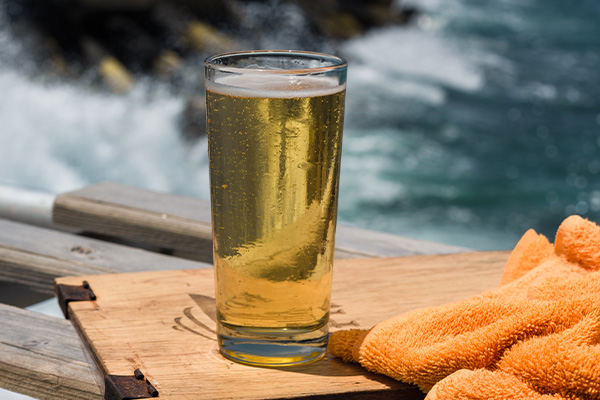
If you’ve never been able to choose between a good lager and ale, your problems end here. Kolsch beer is here for you!
And more than that…
In no time, you’ll have that top-fermented and hop-accentuated goodness called Kölsch beer brewed in the comfort of your own home!
It’s slightly sweet, with just the right bitterness and soft mouthfeel. With all of those combined, who can’t love Kolsch beer, right?
We sure do!
So, what are you waiting for? Gather your grain bag and start brewing now!
Cheers!




